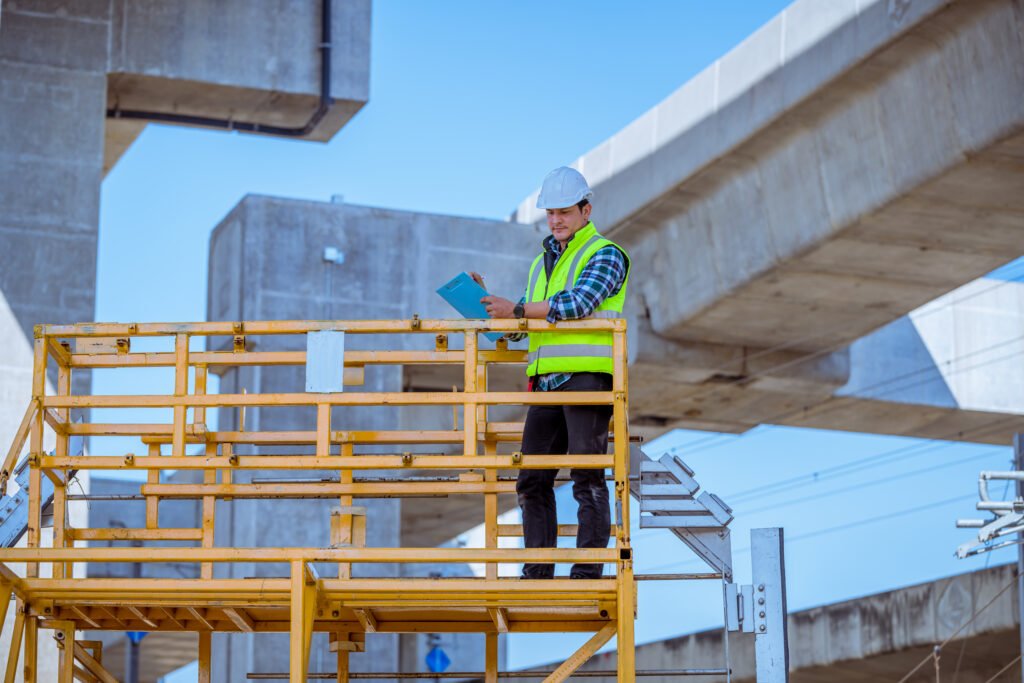Guardrails act as a protective boundary around the perimeter of buildings or construction sites to prevent falls.
Like all forms of fall protection systems, guardrails not only need to be suited to the job and installed correctly but also maintained regularly. This is to ensure that edge protection is in place, including if someone puts their weight against the guardrail.
It’s easy to overlook guardrail safety and maintenance, especially with so many other safety aspects to consider. However, paying attention to general wear and tear, faults or even installation issues with guardrails is essential to ensure the correct safety standards are in place.
Here are some of the aspects to look out for when carrying out a guardrail inspection.
Problems With Guardrails

Problems with guardrails vary, but ultimately come down to the level of fall protection needed not being provided. This can be due to the design or installation of the guardrail, or a degradation of the system over time.
It is recommended to complete a guardrail inspection annually. However, you may wish to increase the frequency of inspections to maximise safety across your site. Plus, be able to spot any issues early before they have a chance to cause a serious problem.
Edge Protection Isn’t Satisfactory
In terms of installation, the HSE states that construction guardrails on a scaffold should be a minimum of 950mm above the working platform.
Different requirements apply for private dwellings and commercial building design. A surveyor or qualified building inspector should check that the height of the guardrail is correct depending on the setting, height and overall safety threat.
Alongside the height, another way the edge protection may be unsatisfactory is if the installation does not run along the entire length of the exposed building edge. Therefore, guardrail length is another aspect that will need to be assessed by a qualified expert.
The design of the guardrail should also have excellent structural integrity so that it can withstand the potential loads which may be placed upon it.
Loose Joints
Guardrails may be formed of a single solid construction, or be made of several components.
Where guardrails are formed of different components, they can be more susceptible to structural vulnerabilities such as loose joints. For instance, where the rail has come loose from the cross-clamp. Fixing such problems can be as simple as tightening any screws through to the replacement of a joint, depending on the cause of the problem.
Anything from poor weather to deliberate tampering (i.e. where there is public access) can cause handrails to become loose from clamp joints. However, an advantage is that often this is a problem that is easy to spot during an inspection since loose joints and any drooping structures will usually have a different visual appearance.
Be sure to check each individual joint. Carefully inspect all bolts, screws and joints to check they are in good working order.
Loose Building Fixings
Guardrails need to be fixed to a strong supporting structure to be able to do their job properly. If these wall or floor components have become loose, then reinstallation or reinforcement will be required without delay.
If the guardrail has come loose, consider whether the material it is attached to is structurally capable to prevent the same issue from recurring. Alternatively, the material may be sound, but the guardrail itself may not have been correctly installed, so be sure to identify the cause of the guardrail coming loose while carrying out any repair work.
Metreel – Purchase Fall Protection Equipment UK
Does your business require equipment to protect your team while working at a height?
Metreel provides various types of safety equipment to businesses in the UK and beyond. To discover our product ranges, please visit our product brochure page.
Alternatively, if you’re ready to place an order or have any questions, please give us a call on 0115 932 7010 or email us at [email protected].